Geometry Library
- A library that has basic 2D and 3D geometries
- Geometry can be created by simply entering geometry parameters, eliminating the need to create sketches and set features
- Boxes, spheres, cylinders, cones, prisms, tori, and spirals for 3D geometry are supported
- Rectangles, polygons, circles, and ellipses for 2D geometry are supported
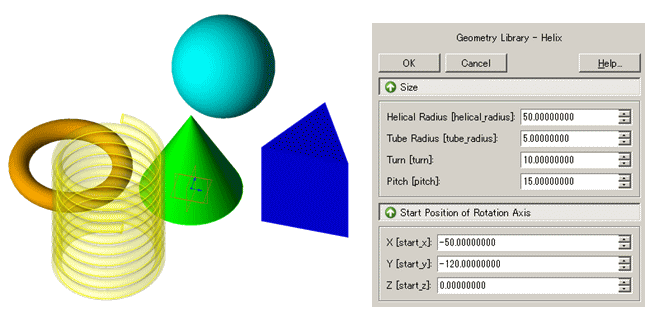
JMAG Function Videos
* If you cannot access the video, please check here.
Section analysis
A 2D analysis can be run directly from a 3D analysis model by automatically taking out a section from the 3D model. This feature is useful particularly for a motor analysis that uses both 2D and 3D analyses. It also allows existing 3D CAD models to be used for 2D analysis without having to manually create a separate 2D model.
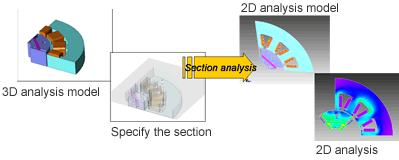
JMAG Function Videos
* If you cannot access the video, please check here.
Multi-Slice Method
Enabled a high-speed calculation for 2D model incorporating 3D effect.
Re-calculation by the multi-slice method is possible based on the existing 2D data.
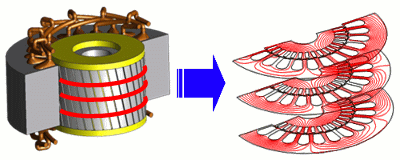
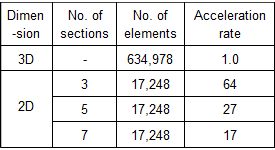
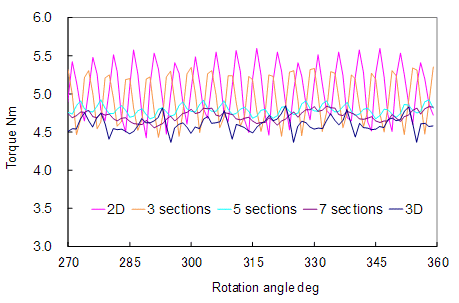
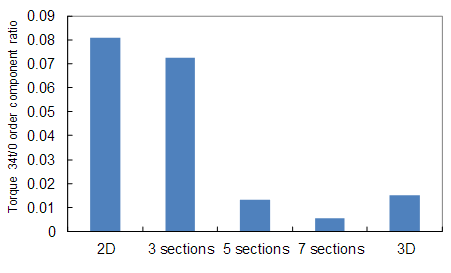
JMAG Function Videos
* If you cannot access the video, please check here.
Gap / Insulation
Gap
This is a condition for doing settings without generating mesh for small magnetic spaces.
For example, when building a core from multiple divided cores, narrow spaces are produced between them. These spaces create strong magnetic resistance, so it is desirable to generate a mesh for the spaces in order to do accurate analysis. However, generating mesh in small spaces causes a huge increase in the number of mesh elements, requiring a lot of calculation time. This can also lead to a degradation of the ICCG convergence due to mesh breakdown.
Using this condition makes it possible to express the magnetic resistance without creating mesh for the spaces.
Below, for the center gap of a reactor, the coil magnetic flux is evaluated using this condition with a gap length varied from 0.1 mm to 2 mm without creating mesh in the gap. Easy magnetic flux evaluation is possible using JMAG-Designer’s case control.
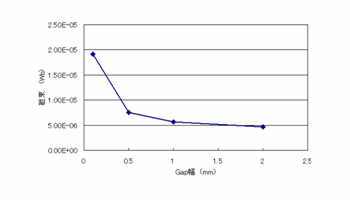 Relationship between gap length and magnetic flux
Relationship between gap length and magnetic flux
JMAG Function Videos
* If you cannot access the video, please check here.
Insulation
Similar to the Gap condition, this is a condition that expresses magnetic resistance without modeling spaces created in cores and magnets.
For example, magnets are sometimes divided in order to reduce eddy currents, but if mesh is generated for the spaces, it takes a lot of work to create the model when the number of magnet divisions has to be changed.
With this condition, just by setting the number of division planes or by checking the box for insulation in the part, electrical insulation can be modeled. Precise eddy current evaluation can be done easily because it is not necessary to change the mesh.
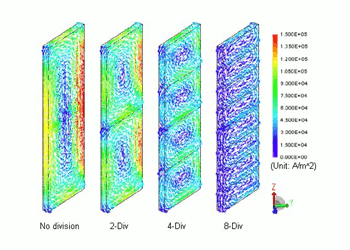 Evaluation of eddy current reduction by magnet division
Evaluation of eddy current reduction by magnet division
JMAG Function Videos
* If you cannot access the video, please check here.
Eccentricity
In JMAG, simple rotation and translation motion can be used without any particular restrictions. Change things like the number of rotations or speed for each specified interval, as well as motion type and constant speed. And through the equation of motion you can define motion that changes position moment to moment from the electromagnetic force calculated in magnetic field analysis. In such cases, you can also set external loads such as load torque and friction torque at the same time. And you can also handle even more complicated forms of motion.
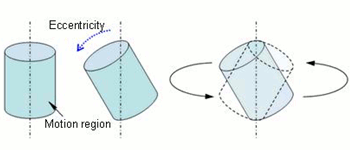 Motion including eccentricity
Motion including eccentricity
JMAG Function Videos
* If you cannot access the video, please check here.


